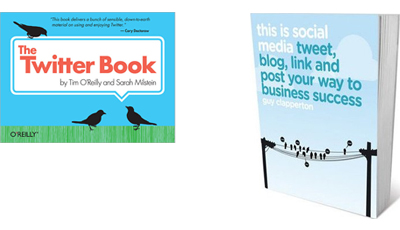140-character reference

You'd have thought there couldn't possibly be anything sufficiently complicated about typing 140-character messages to warrant writing a book about how to do it, but at least three people think you're wrong.
Tim O'Reilly (http://twitter.com/timoreilly), doyen of O'Reilly Publishing, is in the select class of people on Twitter with over a million followers (nearly 1.35 million as of this writing, in fact). Much of his The Twitter Book, written with Sarah Milstein, reads as though it had been written to answer the big question of late 2008/early 2009: isn't this the most pointless technology the world has ever seen? In the last few months, Twitter has become so much a part of the mainstream landscape that people have largely stopped asking that. If 1995 was the year that web sites stopped being a geek playground and began showing up in TV advertising and printed on shop windows, then the last few months are when Twitter made that same transition.

The more valuable part of the book, which is printed in very large type with many screenshots, is the back section that's aimed at businesses. Even much of this advice is pretty basic: define your goals before you start, integrate Twitter into your other channels of communication, pick someone to be responsible. But when businesses make mistakes in full view of the public they look really stupid. And in Twitter's case, they don't get over it, since there's no function for deleting anything. So before you tell your marketing department to get on Twitter, it's not a bad idea to read up a bit on how to behave.
A broader approach to social media is taken by Guy Clapperton, who begins This Is Social Media by just mentioning — in that jokey English bloke sort of way — that he both blagged himself temporary use of a Jaguar and sold the idea for this book on Twitter. The rest aspires to be business advice. There's a chapter of introductions to a variety of different sites and services, most of them well-known: Bebo, Facebook, LinkedIn, Wikipedia, YouTube. After that, Clapperton covers how to get your social media interactions and web site seen via search engines, a guide to the text-creation side of writing a blog or web site, mobile connections (including mini-reviews of some popular smartphones), and incorporating social networking into a business plan — including how to choose the person to run your social networking activities.
The style is extremely colloquial, which may annoy some people. There is no index, and the contents page is skeletal — mistakes O'Reilly did not make. Also, a note to Wiley: there is a reason most books are printed on white paper in black, rather than medium blue, type, and it's not just that there's some kind of prejudice against pretty colours. It's because it's easier to read that way.
To sum up: O'Reilly's book will let you look up what "#followfriday" means. Clapperton's book will give you a basic guide to the various ways of showing off your business online. Get it right, and you, too, can get a book contract via Twitter.
The Twitter Book: The Definitive Guide to the Planet's Most Useful and Effective Communications Channel By Tim O'Reilly and Sarah Milstein O'Reilly 240pp ISBN: 978-0-596-80281-3 £14.99
This Is Social Media: Tweet, Blog, Link and Post Your Way to Business Success By Guy Clapperton Capstone 180pp ISBN: 978-1-906-46570-4 £12.99